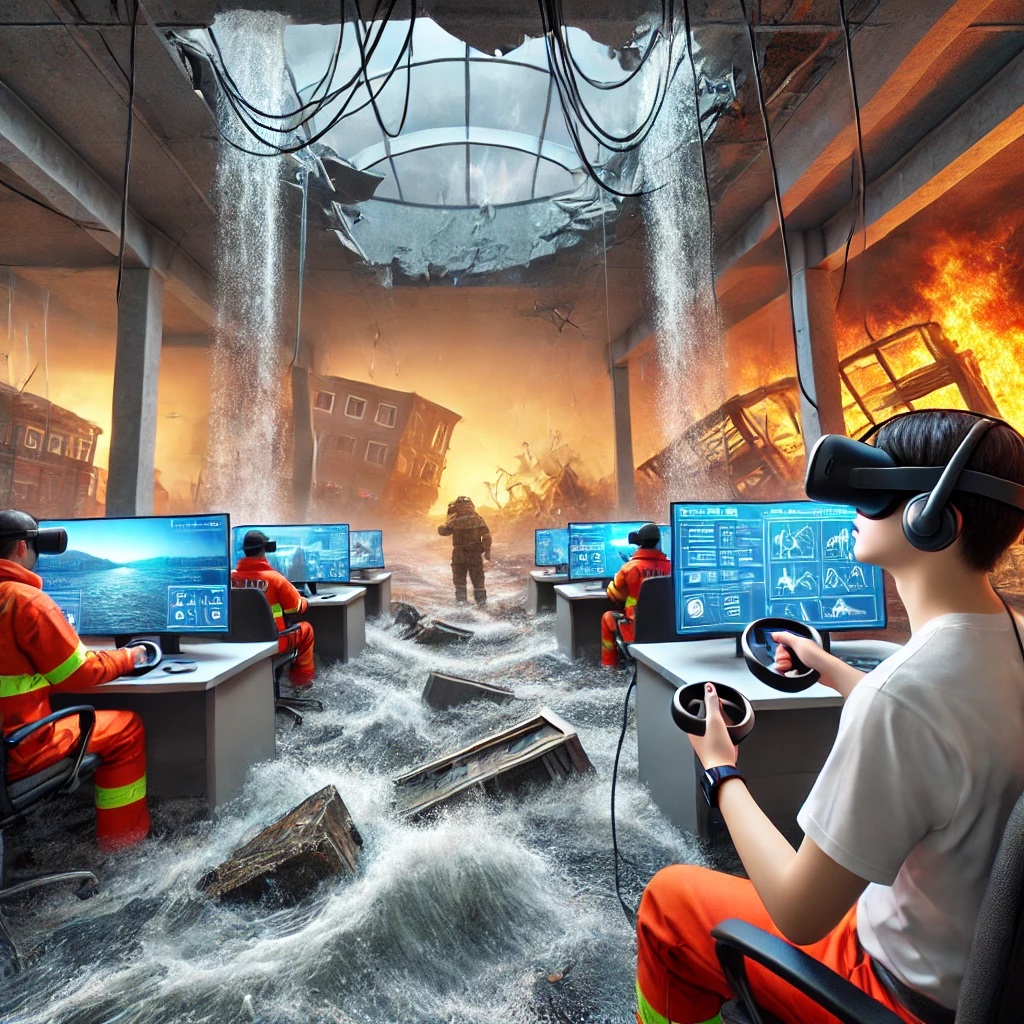VR for Disaster Preparedness: Can Virtual Reality Save Lives?

VR for Disaster Preparedness
Imagine a world where you can experience the terrifying reality of a hurricane, earthquake, or wildfire without ever facing the actual danger. That's the promise of Virtual Reality (VR) for disaster preparedness.
VR technology immerses users in simulated environments, allowing them to learn and practice crucial skills in a safe and controlled setting. This cutting-edge approach is revolutionizing how we prepare for and respond to disasters, offering a unique opportunity to train individuals and communities for the unexpected.
Experiencing the Unexpectable
VR for disaster preparedness goes beyond just watching a video or reading a pamphlet. It provides a truly immersive and interactive experience that allows users to feel the weight of a collapsing building or the overwhelming rush of floodwaters.
Navigating Virtual Natural Disasters
Imagine yourself standing in the middle of a raging wildfire, the flames licking at your feet. VR allows you to experience the heat, the smoke, and the panic of a real-life wildfire. You can learn how to navigate the chaos, find safe routes, and access emergency supplies. VR can also simulate the effects of floods, earthquakes, and other natural disasters.
The Illusion of Reality
VR creates a convincing illusion of reality, making the experience feel almost as real as the actual event. This heightened sense of realism helps users understand the true impact of disasters and develop appropriate coping mechanisms. This allows for more effective training and education, preparing individuals to react calmly and effectively in real-life situations.
Training for the Unknown
VR provides a safe space to train for unlikely but critical scenarios. Users can practice evacuating a building during an earthquake or administering first aid in a chaotic environment. The ability to experience and practice these skills in a controlled environment builds confidence and improves reaction times.
Preparing for the Inevitable
While VR can simulate the experience of natural disasters, its true power lies in its ability to prepare us for the inevitable. It provides a platform to develop essential skills, train emergency responders, and educate the public on disaster preparedness.
Emergency Response in Virtual Environments
VR can be used to train emergency responders in realistic scenarios. They can practice navigating a collapsed building, rescuing trapped individuals, and providing first aid in a simulated disaster zone. This allows them to develop critical decision-making skills and refine their response techniques in a safe environment. VR can even be used to train law enforcement officials in crowd control and disaster management, preparing them for challenging scenarios.
Developing Survival Strategies
VR can help individuals develop survival strategies by allowing them to practice essential skills like shelter building, water purification, and finding food. This can be particularly valuable for individuals living in areas prone to natural disasters. VR can also help educate the public on disaster preparedness, encouraging them to have emergency kits, evacuation plans, and a basic understanding of survival techniques.
Building Resilience in a Virtual World
By experiencing the emotional and physical impact of disasters, VR can help individuals build resilience. This can be crucial for those who have experienced trauma or who are struggling with the psychological effects of disasters. VR can also be used to provide support and resources to communities affected by disasters, helping them to cope and rebuild.
VR for disaster preparedness is not just about learning new skills; it's about fostering a sense of community, promoting collaboration, and building a culture of preparedness. VR has the potential to transform the way we approach disaster response and create a safer and more resilient society.